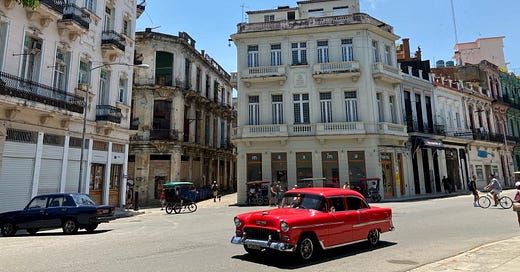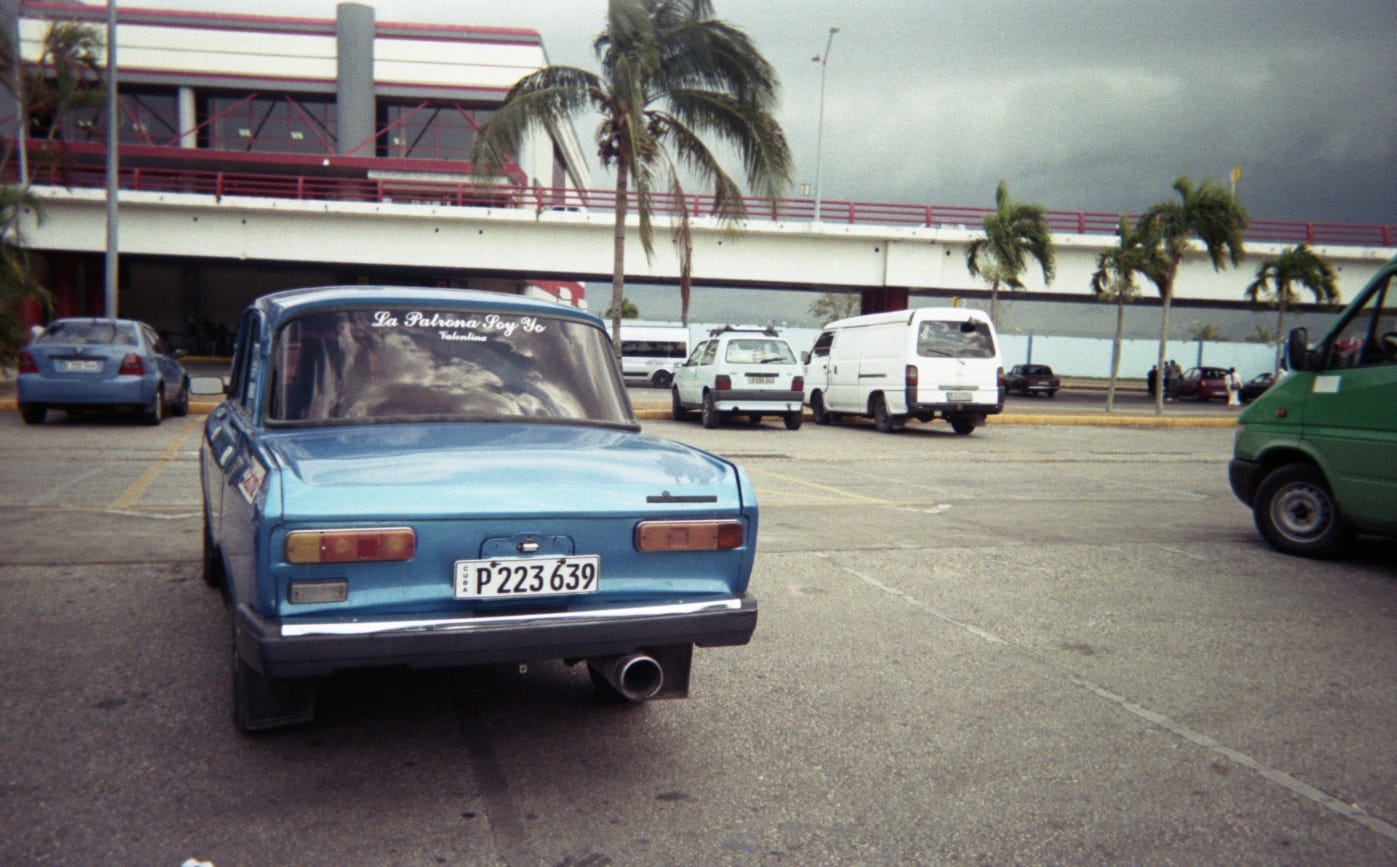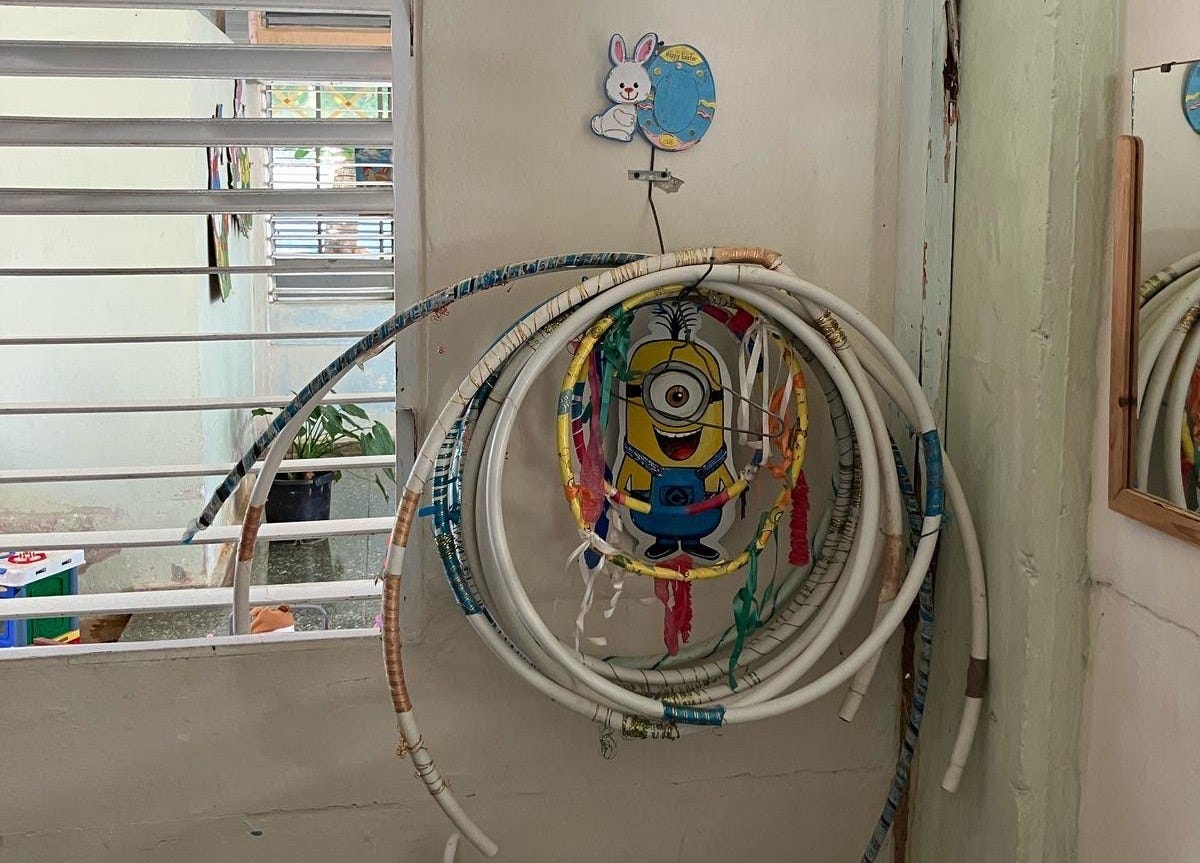I work a day job at a coffee shop. Whenever our espresso machines and grinders break down, Spencer Perez shows up to diagnose and replace parts. He’s the founder of Coffee Machine Service Co. and likely the only person in Chattanooga with the ability to fix these specialty machines.
When I got home from Cuba, I looked forward to running into Spencer. I thought he would like hearing about the repair culture that I observed during my trip.
Of all the amazing things I witnessed in Cuba, I’m surprised that the repairs have stuck with me so much. I had never seen this level of care for objects on such a massive scale, from the everyday handiness of ordinary people to the national programs training and dispatching mechanical engineers to factories and institutions.
When we did get to talk, Spencer’s response was kind of wistful — something like, “95% of my job is finding the part that’s malfunctioning, ordering a replacement, and installing the new piece. It’s so rare that I actually get to do a repair: where I come up with an original, creative solution to a problem.”
I’m not a technical person, and I don’t understand how most complex machinery works. But I am a sensitive and observant person, and the concept of trash weighs heavily on my mind. I feel nauseous throwing out a piece of tech, like a blender or an iPhone, which happens more often than I am comfortable reckoning with. John Wilson’s episode of How To about throwing away batteries still haunts me.
We live in a global economy of planned obsolescence, meaning our objects are terminally ill from the moment they’re made. Every object has a death sentence, scheduled roughly around the time its newer model will debut, and these lifespans continue to shrink with each passing year.
I am late to driving cars—I got my first vehicle in 2022—and maybe this is why I have always struggled with the concept of “totaled.” I used to think a totaled vehicle would look like a hunk of metal wrapped around a pole. In reality, totaled cars are all around us: in seas of pristine-looking bodies lapping up to the edges of parking lots and scrapyards. A car can look perfectly fine on the surface, but it’s totaled the moment it’s easier and cheaper to throw it away and buy something new.
Drivers in the US can only own a vehicle they can afford to repair, and as older models become scarce, parts and labor to fix them also surge in cost. Classic cars from the 60s and 70s are mostly relegated to the super-rich; and just behind them, a small community of hobbyists who maintain a repair culture of their own, usually because they can take advantage of leisure time to perform their own maintenance work. The rest of us drive Honda Fits.
Cuba is known internationally for its classic cars, which often serve as everyday vehicles rather than luxury assets. I ended up in the back seat of a few in Havana, where many people drive them as taxis. The US economic blockade on Cuba forces radical repair for these cars as a necessity. Not only is it difficult to source newer models; it’s nearly impossible to get many of the specialized parts that a US mechanic can order for cheap. Therefore, “totaled” is a very different concept in Cuba: it is well worth committing to old and broken things.
Walking around Havana, I noticed street merchants displaying tableaus of odds and ends, with some things I expected — cosmetics, souvenirs, fruits and veggies — and some that stuck out, like old hair dryers and vintage brick phones. Anything and everything can be stripped for parts, waiting for a creative new application.
When my solidarity delegation visited a preschool, we learned that art and design classes were an essential part of training to become an educator. Toys and props for roleplaying games were handcrafted by the teachers, and classroom walls were papered with remarkably well-drawn cartoon characters. One teacher showed off a memory game she had designed using sealed covers for diaper packs.
I had never seen artistic ingenuity acknowledged and respected like this in a workplace. The teachers explained that they were paid for the time they spent making these classroom objects, rather than having volunteer those hours, as would be the “above and beyond” martyrdom expected of public school teachers in the US. I’m used to artistic knowledge being treated as an individual pursuit; a high school extracurricular, rather than a core set of skills that improve the public good when everyone has them in their tool belt.
While Cuban laypeople can do plenty of repair work themselves, they also count on the Company for Maintenance and Repair of Machines, Tools, and Equipment. MAQUIMOTOR (its Spanish acronym) is a national initiative that trains professional mechanical engineers to tackle repair problems all over the island. From broken cranes to manufacturing equipment in need of new parts, Cuba is able to maintain its national industry despite the blockade.
This creative repair ethic is not exclusive to Cuba. Spencer is Puerto Rican-American, and he explained that his trade practice has some roots in his cultural background. Another friend originally from Mexico told me about a slang phrase that translates to “I Mickey-Moused it,“ which I think is delightful, though neither of us are sure what the Mouse has to do with repurposing objects.
In contrast to its neighboring countries, though, the scarcity of Cuba’s blockaded economy, along with the spirit of the revolution, has a heightened effect on how people treat objects—and even places. Many public buildings in Cuba were once private luxuries for the ruling class. Former dictator Batista’s sprawling palace, seized by Fidel, is now the Museum of the Revolution. Once-private Catholic hospitals became public healthcare centers where all Cubans get free treatment, still illuminated by the colored light of old stained glass windows.
Reading an old copy of Cuba Plus Magazine, I was drawn to an article about the town once called Central Hershey, built by the chocolate magnate Milton Hershey on the model of his existing Pennsylvania factory town. I am obsessed with company towns, having lived in the repurposed skeletons of a few of them, and I love observing how domestic life looks when it’s physically organized by work. Central Hershey was built around a Cuban sugar mill, and after the revolution, Fidel nationalized the production site and redistributed the surrounding homes to the people. In his series Model Town, Cuban photographer Alfredo Sarabia documented the site in 2013, more than 50 years after the revolution.
In Architecture of Necessity, Cuban-American artist Ernesto Oroza studies this reappropriation of places, with special interest in the ways Cubans have adapted old buildings to meet new social needs. It wasn’t just the revolution that transformed these structures — it was, and is, a piecework project continued by ordinary people over time. Like the revolution itself, the built environment is a living project, constantly changing to grow with its social conditions.
Oroza’s previous project, Objects of Necessity, is a similar exploration not of places, but things: the artist photographs a delightful collection of Mickey-Moused objects that hold stories of that same spirit of reappropriation.
Whenever I have conversations about socialism in the US, I’m sure to hear about “innovation” as an argument for a capitalist economic model. I’m not sure where this theory comes from, because it seems fairly obvious to me that innovation happens in socialist countries, too. Cuba proves this out very plainly in its medical research field, where scientists created the world’s first vaccines for lung cancer and meningitis, as well as breakthrough treatments for diabetes and Parkinson’s.
Of course, the capitalist US has also made major innovations in the medical field. But it’s worth noting the majority of this research takes place at taxpayer-funded universities and hospitals. The resulting treatments are then patented by private companies for distribution. Ordinary US citizens, just like Cubans, are the ones funding these healthcare innovations—the only difference is, in the US, the results of our investment are privatized and sold back to us with price tags that can bankrupt our families.
Apart from funding, a society of innovation also needs creativity. People must have opportunities to experiment and come up with new solutions to everyday problems. In the US, this is a quandary; because in most states we don’t have the legal right to repair many of the everyday objects in our lives. If you were to open up your MacBook to tinker with the inside, you would void Apple’s warranty, and risk losing your investment in an expensive item. Instead, we’re encouraged to be dependent on corporations that hold exclusive knowledge of the workings of the objects they sell. Once these objects reach obsoletion, we don’t have permission or means to open up the hood and extend their lives. In the US market, we only have the right to throw things away.
Cuba’s rich environment for innovation, then, is twofold: the stress and limitation of the blockade forces creativity, as people have no choice but to improvise with what little they have. But also, the people innovate because they are relieved of privatization and its limits, and they and their communities reap the rewards of whatever they discover. Cubans can freely imagine new forms, uses, and strategies for the objects around them: they have a right to repair, a radical one.
Caring for objects is a big part of my life. I’ve built my textile art practice making slow, precious things as part of an intentional handcraft tradition that has emerged in opposition to mass-production and industrialization. I’ve been reading William Morris and John Ruskin, early forebears of the Arts and Crafts movement, on the ethic of creating and using handmade objects. Both Morris and Ruskin believed in an intrinsic spiritual fulfillment that comes from deep time creating one-of-a-kind things, and they thought this spirit—a kind of mana—lived on in the objects and impacted the lives of people who bought and used them.
Second to making these objects, repairing them is another way to affirm this belief: that a person’s material fulfillment doesn’t come from an endless cycle of consumption, but from commitment to living with objects and adding to the stories that give them meaning. This is radical repair.
Labor Intensive Recommendations
Art & Labor by Eileen Boris — great overview of Ruskin, Morris, and the Arts and Crafts movement in Europe and America.
Videodrome — I borrowed some DVDs I’m very excited about from this video rental store in Atlanta. They have an amazing international selection of rare films and documentaries.
Friendship — I liked the new Tim Robinson movie.







Hi, yes, Chattanooga and Repair were mentioned, and so my internet friends yelled at me about this. As such, I am obligated to plug the Repair Cafe I host at Chattlab every month to help people fix their stuff for free. If you want to get more involved in repair culture in the US, Chatt is a great place to be! Between the history of Appalachia, Repair Cafe, WOBC, and the recent move of iFixit into town, we have a strong and rapidly growing community of people that live a repair first lifestyle! I encourage you to drop by for the next cafe on the 3rd Saturday from 11a - 3p, or to WOBC any Monday night from ~4-8 and join in on the cool ways to get involved in the community locally!
Hello. I think the car culture part is lacking some key context that would be helpful in understanding why the classic cars still run.
Cubans were banned from buying and selling cars between themselves until around 2011 and couldn't buy new or used cars directly from the state without special permission until 2013. Pre-1959 vehicles were repaired so assiduously, sometimes to the point of replacing their engines entirely with those of Eastern European cars, because cars imported before the Revolution were not subject to the ban on buying or selling individual property over vehicles.
The embargo definitely makes this whole process more complex, but the main barrier to more cars and better replacements has been state policy (a monopoly on import-exports in particular) as shown by the fact that a liberalization of car import rules has left Havana increasingly packed with brand new cars from around the world, even a Tesla that I saw charging in Vedado last year.
Individual car parts brought from abroad are often quite expensive, but this is also connected to the fact that you cannot freely import stuff like that directly, so people would historically leave for Russia, buy some car parts for Ladas, come back weighed down with car parts, and then sell them at huge markups in order to cover the cost of their trip and even make a profit. This may be changing as the import sector gets partially liberalized as a response to the expansion of MIPYMES, but that's also a big part of the 'repair culture' at play in regards to cars.
None of this is to say that it isn't admirable how Cubans have figured out various ways to survive despite all kinds of shortages, just that the fault isn't just that of the embargo. State policy has been a major driver since the beginning, as much or (on a case by case basis) perhaps more than the embargo, and I think it's a key part of this story.